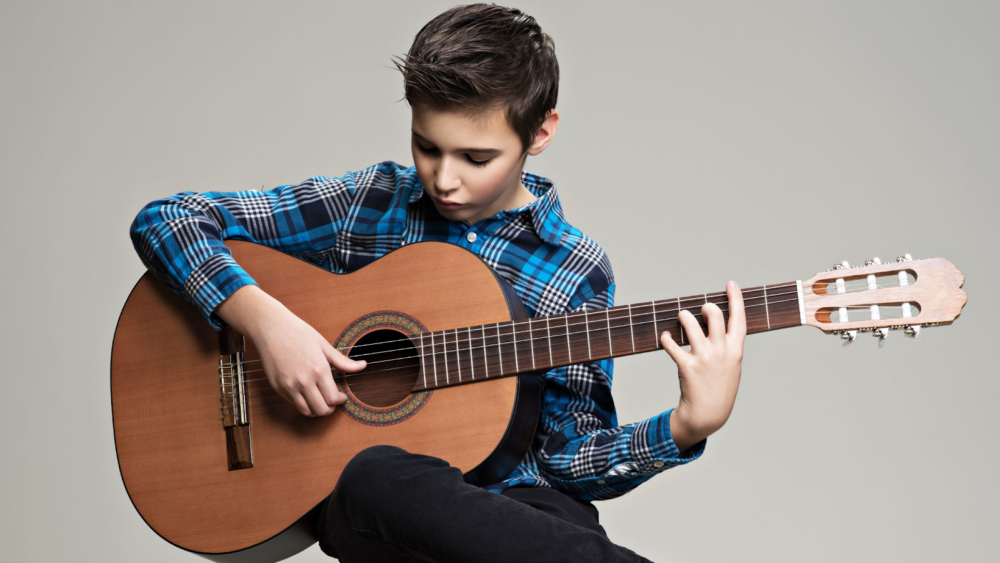A 3/4 size guitar, often referred to as a 36-inch guitar, is the perfect choice for young learners and those with smaller frames. As a smaller version of a full-size guitar with a more comfortable body, it provides an accessible entry point into the world of music. Kids looking for entry-level guitars or beginners picking up the acoustic guitar for the first time will thrive with this size.
But what exactly are the main differences, and is this guitar type suitable for everyone?
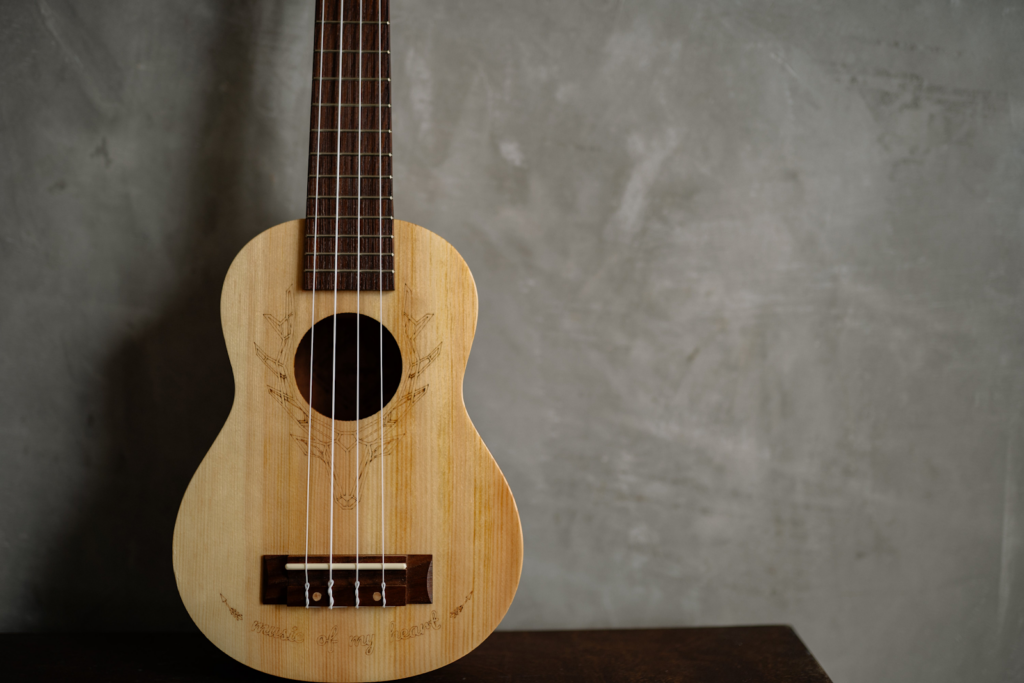
The Differences Between Full-Sized Guitars and 3/4-Sized Guitars
When choosing an acoustic guitar, it’s so important to select the right size. Full-sized guitars and 3/4-sized guitars cater to different needs and preferences. Understanding their differences is crucial for both beginners and experienced players.
Size and Dimensions
Body Size: The most noticeable difference between these guitars is the physical size. A full-sized acoustic guitar typically measures around 40×15 inches, whereas a 3/4-sized guitar is about 36×13 inches. This difference makes the 3/4 more manageable, especially for younger players or those with smaller frames.
Scale Length: The scale length, which is the distance between the bridge and the nut, also differs. Full-sized guitars usually have a scale longer than 24 inches, while 3/4-sized guitars have a length between 20 and 24 inches. The shorter scale length in 3/4 guitars makes it easier for smaller hands to reach and play chords.
Playability and Comfort
Neck Width and Depth: Full-sized guitars have wider and sometimes deeper necks, which might be challenging for players with smaller hands. In contrast, 3/4-sized guitars have narrower necks, offering a more comfortable grip and easier access to frets.
Weight and Handling: Due to their smaller bodies, 3/4 guitars are lighter and easier to handle, reducing fatigue during extended playing sessions. This can be a significant advantage for younger players or those who travel frequently with their guitar.
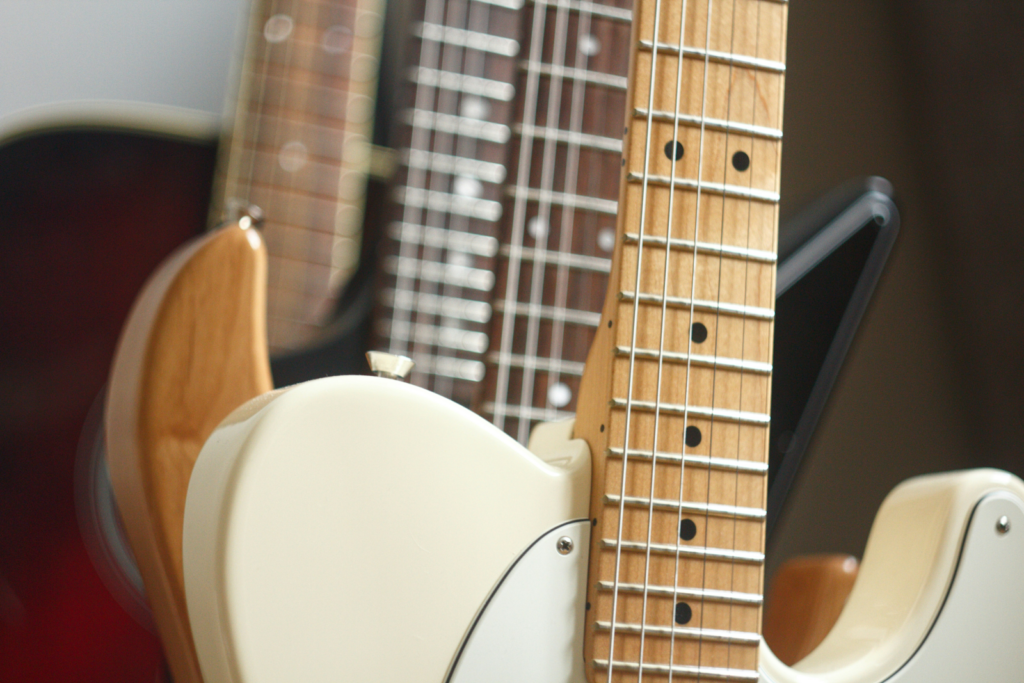
Sound Quality and Volume
Tonal Quality: Full-sized guitars generally produce a richer, more resonant sound due to their larger bodies and longer scale lengths. They are capable of greater volume and a broader tonal range.
Volume and Projection: While 3/4 guitars may not match the volume and projection of full-sized guitars, advancements in design and construction have significantly improved their sound quality. They still offer a pleasing and balanced tone, suitable for various music styles.
Suitability
Full-sized guitars are ideal for adult players and those with enough physical stature to handle the size comfortably. They are the standard in professional music settings and are suitable for a wide range of music genres.
In comparison, 3/4 guitars are perfect for children, beginners, and players with smaller frames. They’re also an excellent choice for travel guitars due to their portability.
Versatility and Styles
Full-sized guitars are versatile and used in almost every music genre. While 3/4-sized guitars are also quite versatile, they may be more suited to specific styles where a softer, more intimate sound is preferred, such as fingerpicking songs.
Both sizes come in various types, including acoustic, classical, and electric models. The right choice depends on the player’s age, size, comfort, and musical needs. Full-sized guitars offer a traditional playing experience with rich sound, while 3/4-sized guitars provide convenience, comfort, and accessibility, especially for younger or smaller-framed players.

Who Should Opt For a Smaller Size Guitar?
Young Students
The primary audience for 3/4 size guitars is children aged 8 to 11. This small guitar size aligns well with their hand size and body stature, making it easier for them to learn and practice. Handling an electric or acoustic guitar that fits their frame can significantly improve their learning experience and maintain their interest in playing.
Travelers and Individuals with Smaller Frames
These guitars aren’t just for kids. They’re also perfect for adults who find the standard guitar size too cumbersome. Their portability makes them an excellent choice for musicians on the go, offering a great balance between sound quality and convenience.
If you’re looking for the perfect travel guitar, make sure the acoustic guitar you purchase comes with a gig bag.
Types of 3/4 Size Guitars
Acoustic Guitars
3/4 acoustic guitars are popular for their versatility and rich sound. They’re suitable for a variety of music genres and are often the first choice for beginners. The acoustic steel string version provides a brighter tone, while those with a mahogany neck and rosewood fingerboard deliver warmer notes.
Luna Aurora Borealis
This acoustic guitar is a fantastic choice to get started. With a range of fun color options, from teal sparkle to white sparkle and many more, it makes a great option for beginners or children. The guitar features a basswood top, back, and sides. It boasts a mahogany neck and a nut width of 1.69 inches. It’s a fantastic short-scale acoustic guitar for any player.
Buy Links:
https://www.sweetwater.com/store/detail/ARBORTEA–luna-aurora-borealis-3-4-size-guitar-teal-sparkle
Classical Guitars
Classical guitars in 3/4 size, typically with nylon strings, are softer on the fingers, making them ideal for first-time players. The classical guitar’s mellower sound suits genres like folk and classical music. If you want to practice fingerstyle songs, then the classical guitar is the perfect instrument for you.
The Yamaha CGS Student Classical
A great classical instrument to get started with is the Yamaha CGS Student Classical Guitar. With a spruce top, a nato neck, and a rosewood fingerboard, this model produces a warm and balanced tone you’re likely to find on a bigger guitar. It’s a fantastic first guitar.
Buy Links:
https://www.guitarcenter.com/Yamaha/CGS-Student-Classical-Guitar-Natural-3-4-Size-1308847077939.gc
https://www.sweetwater.com/store/detail/CGS103A–yamaha-cgs103aii-3-4-scale-classical-natural
Acoustic Electric Guitars
Acoustic-electric guitars in 3/4 offer the same diversity and functionality as their full-size counterparts but in a more manageable package. They’re perfect for young rockers or those looking to explore different sound effects without the bulk of a full-size option.
Yamaha APXT2
This acoustic guitar is a great option for those who want that big acoustic-electric sound in a small package. With Meranti back and sides, a spruce top, and a nato neck, this model sure delivers the tone that guitarists of all ages and playing levels crave.
Buy Links:
https://www.sweetwater.com/store/detail/APXT2Blk–yamaha-apxt2-3-4-size-thin-line-cutaway-black
Budget Considerations
When venturing into the world of 3/4 size models, understanding the financial aspect is as important as any other feature. These guitars, known for their compact size and suitability for young learners and those with smaller frames, are generally more affordable than their full-size counterparts. However, the price range can vary significantly based on several factors.
Guitar Types and Their Cost Implications
Acoustic Guitars: Acoustic models are a popular choice for 3/4 guitars. Typically, the cost for a decent quality 3/4 acoustic guitar starts at a modest price point, making them an excellent option for beginners. The price can increase with premium materials like a mahogany neck or a rosewood fretboard, which contribute to better sound quality and durability.
Classical Guitars: 3/4 size classical guitars, usually equipped with nylon strings, are often priced similarly to their acoustic counterparts. You can get both expensive and budget models. The softer strings are easier on the fingers of beginners. The cost can vary depending on the craftsmanship and the type of wood used. However, if your classical or acoustic guitar comes with steel strings, you can change the strings to nylon.
Electric Guitars: Electric variants, despite their smaller size, can range from budget-friendly to quite expensive, especially if they come from renowned brands. These types of guitar offer a wide array of features and electronics, which can also impact the price.

Factors to Consider When Choosing a Small Guitar
Choosing the right guitar involves more than just picking the first one you see. Several key factors play a crucial role in ensuring you get an instrument that not only suits your needs but also enhances your playing experience.
Here’s a detailed breakdown of what you need to know.
Evaluating Materials and Build Quality
The type of wood used for different parts of the guitar, like the neck, body, and fretboard, influences both the tone and durability. Common choices include mahogany for the neck, known for its strength and warm tonal quality, and rosewood for the fretboard, favored for its smooth feel and clear sound.
Look at the build quality of the guitar. Check the joints, finishes, and overall craftsmanship. A well-made guitar will not only last longer but will also provide a better sound and a more enjoyable playing experience.
Assessing Sound Quality
The guitar should produce a clear, balanced sound. Even with its smaller size, a 3/4 guitar should not sound tinny or muted. Play a variety of notes and chords to test the guitar’s tonal range and volume capabilities. The body of the guitar should resonate well, contributing to a fuller, richer sound. This is particularly important in acoustic and classical models.
Comfort and Playability
Neck Size and Shape: The neck should feel comfortable in your hand. Different neck profiles can affect playability, especially for those with smaller hands.
String Action and Tension: The height of the strings above the fretboard (action) and their tension should be comfortable for playing. Too high an action can make playing difficult for beginners, while too low can cause buzzing sounds.
Overall Ergonomics: The guitar should sit comfortably against your body when you’re playing. It should not feel too heavy or awkward, and you should be able to access the frets easily.

Choosing the Right Guitar Brand
Consider brands known for their quality and reliability. Research and read reviews to get a sense of customer satisfaction and common issues with different brands. Good warranty terms and responsive customer support are indicators of a brand’s confidence in their product and their commitment to customer service.
Maintenance and Care
Proper maintenance and care are essential for preserving the sound quality and longevity of your guitar, no matter its size. Though smaller than a full-size guitar, this instrument demands the same level of attention to ensure it remains in top playing condition.
Here’s a detailed guide on how to maintain and care for your smaller guitar.
Regular Cleaning
Body and Neck: Wipe down the guitar’s body and neck regularly with a soft, dry cloth to remove fingerprints, dust, and sweat. For more thorough cleaning, use a slightly damp cloth followed by a dry one. Avoid using harsh chemicals that can damage the guitar’s finish.
Strings: Clean the strings after every use. Oils and dirt from your fingers can accumulate on the strings, affecting their sound and lifespan. Use a string cleaner or a slightly damp cloth, then dry the strings thoroughly.
Fretboard: The fretboard requires occasional cleaning and conditioning, especially if it’s made of rosewood or ebony. Use a specific fretboard cleaner and conditioner to keep it moist and prevent cracking. If you have a walnut fretboard, make sure to check for damage, as this material rots easily.
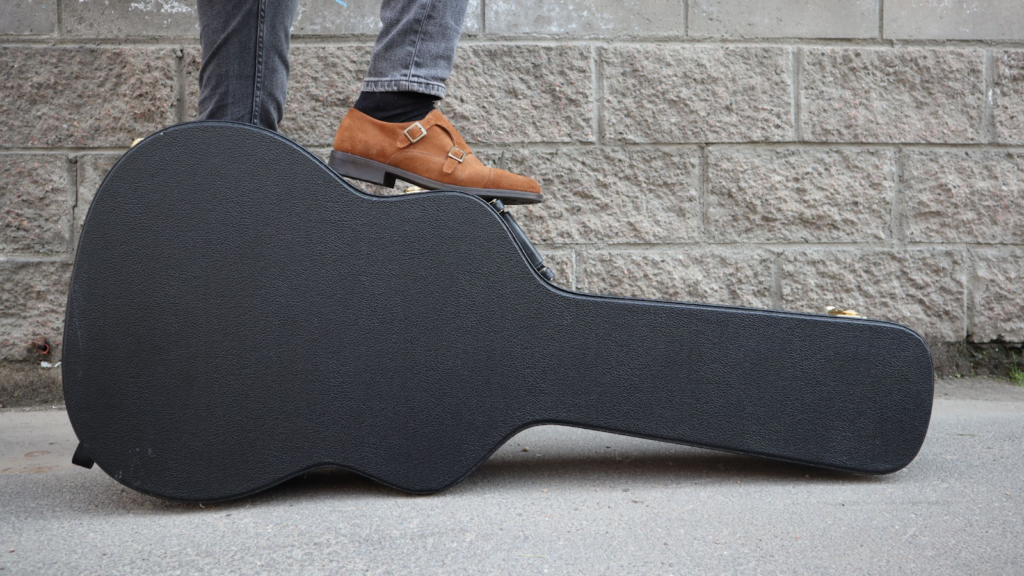
Proper Storage
Temperature and Humidity: Store your guitar in an environment with stable temperature and humidity. Extreme changes can cause wood to warp or crack. Consider using a guitar case with a humidifier during dry months.
Avoid Direct Sunlight: Keep the guitar out of direct sunlight, as prolonged exposure can damage the finish and warp the wood.
Guitar Stand or Case: When not in use, keep the guitar on a stand or in a case to protect it from accidental damage.
String Changing and Tuning
Change the strings regularly, depending on how often you play. Fresh strings provide better sound and playability. Learn how to properly string your guitar to avoid damage to the neck or bridge.
Keep your guitar properly tuned. Consistent tuning not only ensures good sound quality but also maintains proper tension on the neck.

Checking and Adjusting Action and Intonation
Check the string action periodically. If the strings are too high or too low, it can affect playability. Adjustments can be made at the bridge or by a professional if necessary.
Ensure your guitar’s intonation is accurate, meaning the guitar stays in tune along the fretboard. This might require professional adjustment, especially if you notice persistent tuning issues.
Periodic Professional Check-ups
Just like any other instrument, guitars benefit from periodic check-ups by a professional. They can spot issues like fret wear, structural problems, or necessary adjustments that might not be obvious to a casual player.
If you notice any damage, such as cracks, loose braces, or electronic issues in an electric guitar, seek professional repair immediately to prevent further damage.
By following these detailed maintenance and care steps, your guitar will not only sound better but will also last longer. Regular cleaning, proper storage, string care, and professional check-ups are key components of responsible guitar ownership, ensuring that your instrument remains a source of joy and music for years to come.
Frequently Asked Questions: 3/4 Guitars
Is a 3/4 guitar too small for adults?
Not necessarily. While 3/4 size guitars are smaller than full-sized guitars, they are not exclusively for children. Many guitarists find them comfortable, especially those with smaller hands or a shorter reach. They’re also popular among adult players as travel guitars due to their portability. The key is comfort and playability. If an adult finds a small guitar comfortable to play and it meets their sound requirements, it’s a suitable choice.
Does Ed Sheeran use a 3/4 guitar?
Yes, Ed Sheeran is known for using smaller-sized guitars, which are often mistaken for 3/4-size guitars. However, he primarily uses a custom-made guitar that is smaller than a standard full-sized guitar but not exactly a 3/4 size. These guitars are designed by Martin and are part of the LX1 series, which are known for their compact size and are similar to a 3/4-sized guitar in terms of portability and feel but with unique specifications tailored to his preferences.
Is a travel guitar the same as a 3/4 guitar?
Not exactly, but they are similar. Travel guitars are designed to be portable and easy to carry, making them ideal for musicians on the go. While many travel guitars are similar in size to 3/4 guitars, they can vary in terms of scale length, body shape, and overall design. The term “travel guitar” is more about the function (ease of travel) rather than specific size measurements, whereas a 3/4 guitar specifically refers to the size relative to a full-sized guitar. Therefore, while all 3/4 models can be considered good travel guitars, not all travel guitars are necessarily 3/4 size.
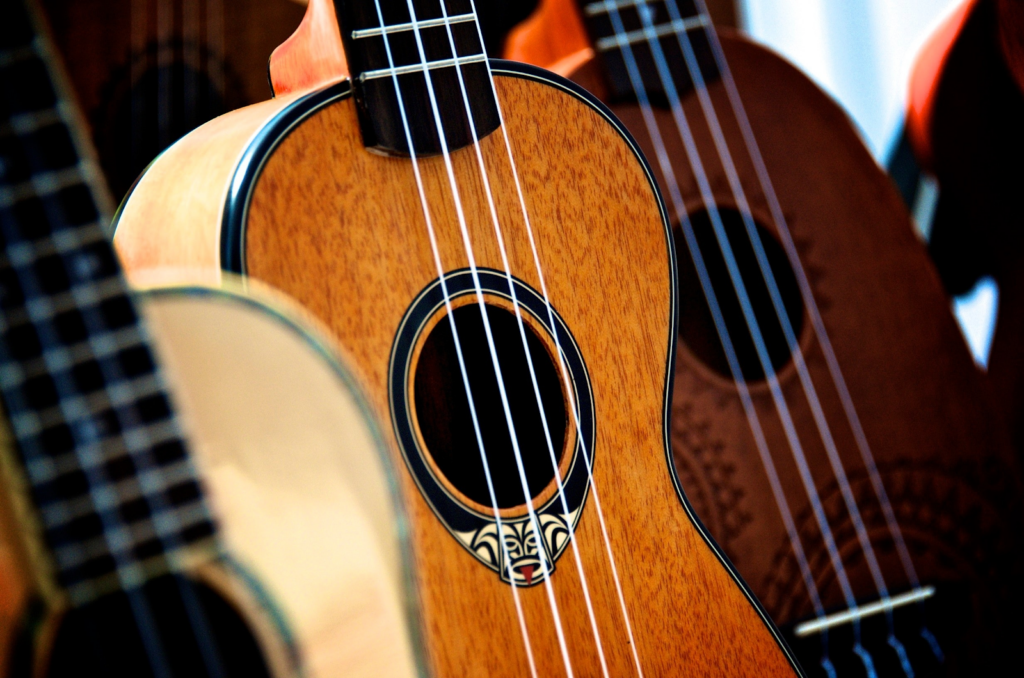
Conclusion
A 3/4-sized guitar is an excellent choice for young learners, travelers, and those with smaller frames. Whether you choose an acoustic, classical, or electric model, ensure it matches your budget, comfort, and sound quality requirements. With proper care, your guitar can be a long-lasting musical companion.
This guide aims to provide comprehensive information about 3/4 size guitars, making your selection process informed and enjoyable. Embrace the joy of music with the perfect guitar that meets your needs and preferences.


